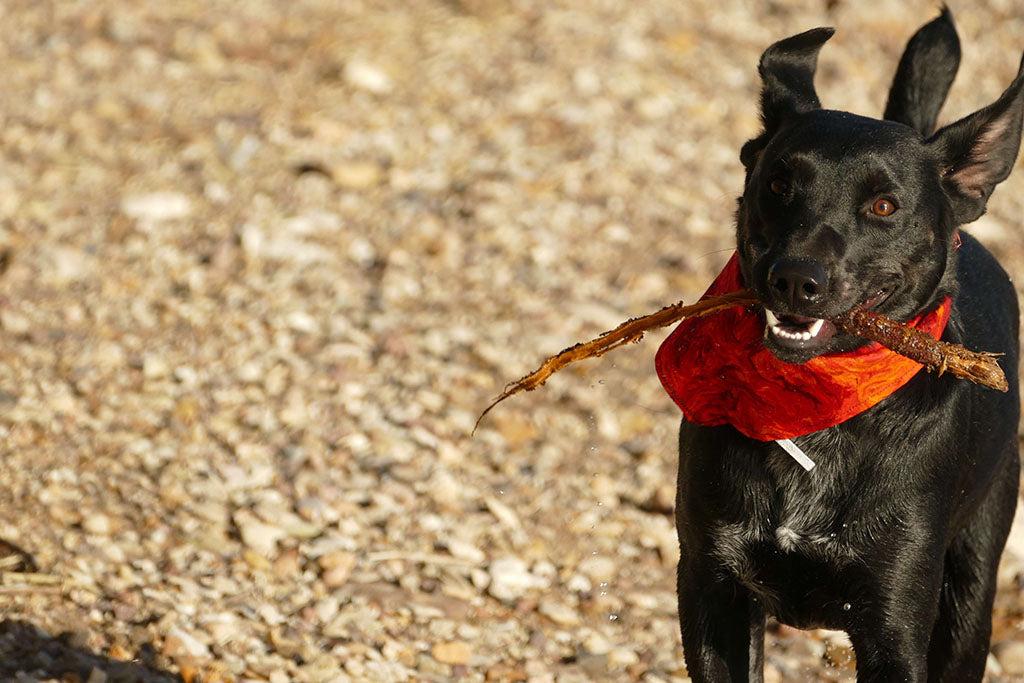Summary: If you’re wondering how to teach your dog to play fetch, you’re in the right place! In this blog, we’ll learn how to teach a dog to fetch and why dogs like to play fetch too… Nearly every dog on the planet loves a good game of fetch, and it’s a brilliant interactive […]
How To Teach A Dog To Fetch

Summary: If you’re wondering how to teach your dog to play fetch, you’re in the right place! In this blog, we’ll learn how to teach a dog to fetch and why dogs like to play fetch too…
Nearly every dog on the planet loves a good game of fetch, and it’s a brilliant interactive game to play with them! Most dogs will be willing to fetch their own toys, but some can be really receptive to collecting anything when commanded (particularly breeds like Retrievers…well, it is in their name!). So, learning to fetch could even become a new party trick for you both to show off at your next social occasion…
How To Teach A Dog To Fetch
If you want to teach your dog to fetch, then you’re going to need to reward them and positively reinforce their fetching with some tasty treats! Try to make these as healthy (but pleasing and tempting!) as possible, as you may need several treats in the first few goes of teaching the game to them. Once you’re loaded up with their delicious treats, grab the item you want them to retrieve and start teaching;
- Place the object you want them to retrieve on the floor and encourage them to interact with it, praising them lots when they do so. You want to get them excited and invested in the object!
- Once they are consistently engaging with the object, hold it up off the ground and move it around. Get them to put it in their mouth – if they do, praise and reward them with a treat when they drop the object on command. Repeat this a few times.
- Then, place the object a few feet away from you and see if they will bring it to you with the promise of another treat. Be patient, this step may take a few goes…
- Once they figure Step 3 out, start introducing the word “fetch” into the game before they retrieve the item, rewarding them with a treat each time they bring it back to you.
- Now, it’s time to gradually increase the distance! Move the object further away and then, if still successfully retrieving the item and responding to the word “fetch”, start throwing it far away from you encouraging your dog to keep collecting it.
- They’re playing fetch! Now, be mindful that dogs aren’t great at generalizing, so you may have to restart this process with each new object you want them to retrieve until they’ve properly embedded the word “fetch”. Make sure you don’t choose items for them to fetch that are too heavy, awkwardly shaped, or could potentially hurt their teeth.
Remember, if your dog is really struggling to digest how the game of fetch works, take a break and return to it later on to avoid them becoming stressed or you becoming frustrated with them. If they aren’t getting it, remember you can always find a different game to play with them!

When teaching a dog a new behavior or game, training session periods are most effective when limited to 10-minute bursts every few hours. Even older dogs have a limited attention span.
So, after the first 10 minutes, take a break and then return for another 10 minutes an hour or two later. Do this over a couple of days to help them properly learn and embed the new game, and then keep returning to it regularly throughout their everyday routine for as long as they’re physically able to perform it.
Never punish a dog for not retrieving an item – dogs don’t understand punishment. They will just learn to be scared of you. Just rewind and try again with patience, positivity, and kindness.
When teaching a dog anything new, always be sure to go at your dog’s pace and don’t force them to play a game that their breed, age, temperament, and health is perhaps not capable of.
If you decide to play fetch when out in a dog park or field, make sure you set boundaries in the area to keep you and your dog safe. Try to keep your dog focussed on you and the item you’re playing with. If there’s a risk of wildlife being present in the area, your dog’s instincts may take over when they’re hyped up during play and they may divert their attention to an innocent squirrel or rabbit – this is something to be mindful of. Always make sure you’re in full control of your dog when out and about, and that you’re confident their recall is reliable and excellent before playing fetch away from home.

Why Do Dogs Like To Play Fetch?
A game of fetch is incredibly pleasing for a dog to play!
The movement of a ball or a stick flying through the air mimics prey which triggers a dog’s wild, natural instincts to chase it. This is more obvious in certain breeds than others, but doing anything that comes naturally to a dog is usually a very satisfactory experience for them.
Feeling like they’ve accomplished something makes them feel good, just like it does in us, humans. Getting a reward and praise when they retrieve an item is a really brilliant feeling for our pups.
Fetch is also great for boosting your dog’s exercise levels, and suitable amounts of exercise can calm your dog by helping them expend excess or pent-up energy, which in turn makes them feel good! A game of fetch can be great for a dog in addition to a daily walk, or in circumstances where a walk is difficult to go on (like on days when the weather is too severe to go out).
A game of fetch is also a great way of enhancing a bond between pet and master, which any dog appreciates and enjoys – and usually, so does their human!
Read our blog on How To Teach A Dog To Spin here.
Sources
Author Taffer, Marissa “How To Teach A Dog To Play Fetch: A Detailed Guide” Dog-Eared, Powered By Ollie, Mar 30. 2020 https://blog.myollie.com/how-to-teach-a-dog-to-play-fetch/
Author Oelze, Patty “Why Dogs Like Balls”, Wag Walking, Jul 02. 2018 https://wagwalking.com/behavior/why-dogs-like-balls
 S
S



